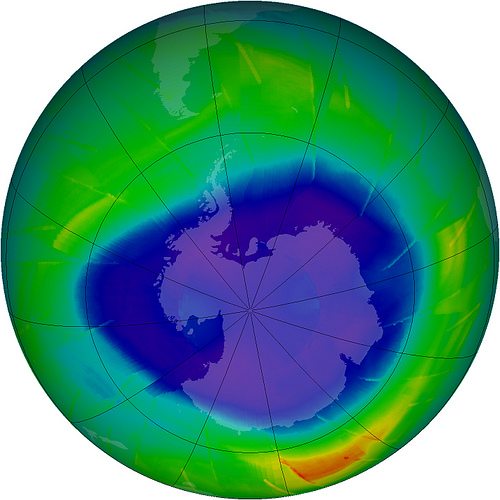

Environment
Ozone layer on track to recovery, UN says
The Earth’s ozone layer that protects us from the dangerous ultraviolet rays of the sun is expected to recover over the next few decades, the UN Environment Programme (UNEP) and the World Meteorological Organisation (WMO) have said.
Blue & Green Tomorrow is currently running a crowdfunder to ensure its survival. Please pledge.
The 1987 Montreal Protocol introduced a ban on ozone depleting chemicals, such as chlorofluorocarbons (CFCs), often used in refrigerators and spray cans – which could have caused 2 million cases of skin cancer annually by 2030 if not phased out, according to the UN.
The measure was called for after a hole in the ozone layer above Antarctic was detected in 1985, triggering fears that it could cause an increase in human cancer and also affect the environment.
However, the UN organisations have now claimed that the ozone layer is on track to recover by 2050.
UNEP executive director Achim Steiner said, “There are positive indications that the ozone layer is on track to recovery towards the middle of the century. The Montreal Protocol – one of the world’s most successful environmental treaties – has protected the stratospheric ozone layer and avoided enhanced UV radiation reaching the earth’s surface.”
He said that the same level of effort should be put into tackling dangerous effects of climate change.
Steiner added, “On September 23, the UN secretary general will host heads of state in New York in an effort to catalyse global action on climate. The Montreal Protocol community, with its tangible achievements, is in a position to provide strong evidence that global cooperation and concerted action are the key ingredients to secure the protection of our global commons.”
WMO secretary-general Michel Jarraud said the progress made was a “major environmental success story”.
“This should encourage us to display the same level of urgency and unity to tackle the even greater challenge of climate change. This latest assessment provides solid science to policymakers about the intricate relationship between ozone and climate and the need for mutually-supportive measures to protect life on earth for future generations.”
Despite the improvement in restoring the ozone layer, scientists have recently announced that they have found seven new manmade gases, which they say are contributing to thinning the layer, although not in a significant way.
Photo: NASA Goddard Space Flight Center via flickr
Further reading:
Scientists discover three new ‘manmade’ ozone depleting gases
Scientists discover four new manmade ozone-depleting gases
Global warming slowdown linked to ban of ozone depleting chemicals


 Environment10 months ago
Environment10 months agoAre Polymer Banknotes: an Eco-Friendly Trend or a Groundswell?

 Environment11 months ago
Environment11 months agoEco-Friendly Home Improvements: Top 7 Upgrades for 2025

 Features9 months ago
Features9 months agoEco-Friendly Cryptocurrencies: Sustainable Investment Choices

 Features10 months ago
Features10 months agoEco-Friendly Crypto Traders Must Find the Right Exchange






























